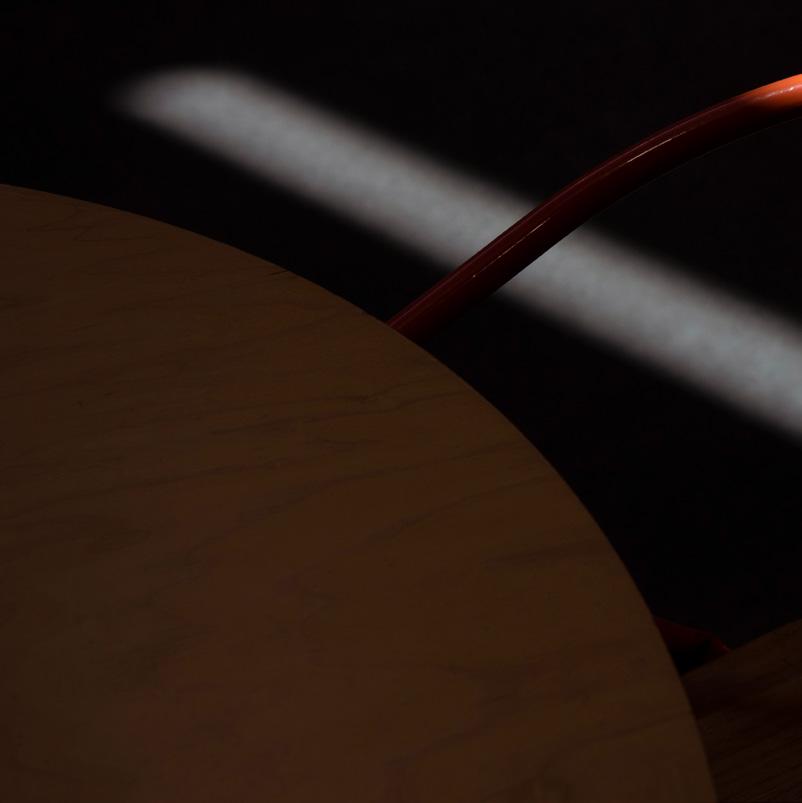
4 minute read
The Extreme Pivot Manasa Yeturu
Extreme The Pivot

by Manasa Yeturu
Extreme Pivot


“ W hat matters?” I asked as I stared at 28 faces laid out in a grid on my computer screen.
Then, I requested our students turn off their screens and take a moment to reflect on that question for themselves. It was week nine of spring quarter, and Black Lives
Matter protests had sprung up around the country in response to George Floyd’s murder. In just under two months we had seen the world radically change. Design for
Extreme Affordability (Extreme), a course focused on social impact, had to shift its context in real time.
Start with awareness.
What constraints exist?
Personal? Professional? Environmental? Cultural?
Lives with multiple Single 3 with mother limited of Difficult speak up for myself ing ME People space) Caretak (limited er time of elderly family Responsible for Interested & willing to engage in short windows over Runs own bus (impacted by Covid-19) iness youth (teacher) 3 weeks YOU Lives with multiple Shared virtual spaces family members options are phone & (limited space)WhatsApp [no video] Male family US Limited WIFI & shared data plan member has t present for conversations o be
Shared tie to Indian culture but power socioeconomic dynamics & differences exist
In the 17-year history of the course,
there had never been a time when travel had been completely grounded. Global user research had to be remote. Our partner organizations faced constantly shifting global and local challenges. Prototyping seemed impossible with students in different time zones. We were halfway through our two-quarter, very hands-on, team-based class where students were set to travel around the globe, and the whole thing had to be made virtual. As a teaching team we had a week to decide: can we move forward with the class?
We did move forward. And, we learned a few things along the way about what matters when you have to make extreme pivots.
Start with Awareness.
In Extreme, we often talk about how important it is to understand both our partners and our users. That usually involves an immersive in-country visit by our student teams. But this year, all of it had to be remote. When making that pivot, I introduced the Me+You+We framework–encouraging our students to reflect on what constraints and identities exist at each level [personally/professionally/ environmentally]? In a constantly shifting environment, it became even more important for students to build trust with both their partners and end users and be conscientious of how they were holding emotional space for themselves and others. Remote research wasn’t easy, but it allowed our students to build deep connections with and reliance on the real experts–the partners and the communities they serve.
Own the Ambiguity.
All of us were constantly swimming in an ocean of ambiguity this spring. Being transparent about what we didn’t know and communicating often about what we did set a culture of trust within the class, with our partners and the communities we were working with. When things were changing on an almost daily basis, it became vitally important to balance optimism and clarity with real talk.
Talk Less. Engage More.
Design thinking is a “learn by doing” culture. But when suddenly constrained into an all virtual remote environment, how do you engage? We lectured less and coached more. Every hour-long class session was under 15 minutes of lecture and 45-50 minutes of an activity or team conversation. Class time was reduced and replaced with additional coaching time, personalizing the experience and simultaneously pushing students to be the drivers of their own learning experience. It pushed us to not just make one huge pivot, but constantly evolve. We made mini-pivots based on the needs of each student team and their partner.
Build for Meaning, not Perfection.
It was an experiment and none of us knew if it was going to work or not. But what I did know is that we could design around and commit to building experiences that were meaningful for our students, for the partners they worked with and for the communities we aim to serve. As we tried, failed, pivoted and moved, we made sure to infuse in our work the commitment to a set of values.
At the start of the quarter, I asked the class “What does empathy mean in a crisis?” and listed out five tenets for holding ourselves accountable. For us, it meant: Holding emotional space for ourselves and others; being transparent; owning our commitments; evolving our actions as needed; and finding moments of learning, opportunity and growth. These tenets moved us forward, and at the end of the quarter after a roller-coaster of collective and individual challenges we created not one solution or experience, but rather a set of meaningful insights, moments and experiences for Extreme 2020.
Navigating the unknown waters of
2020 felt and continues to feel like the visual that is often used for showcasing what design process actually looks like–a wiggly, topsy-turvy, chaotic mess. While the circumstances differ, being challenged with moving through complex evolving constraints in a social impact design course parallels in many ways the lifelong experience of practitioners and communities focused on making progress on the wicked problems of racial injustice, socioeconomic disparities, education gaps and other inequities that are built into the fabric of our societies and systems. Attempting to move through, understand and make tangible impact on these issues has always been and will continue to be messy. But by repeatedly reminding ourselves and coming back to ‘what matters’ individually and collectively we can build meaningful threads of change.

Here’s to focusing on ‘what matters’ in 2020 and beyond.











